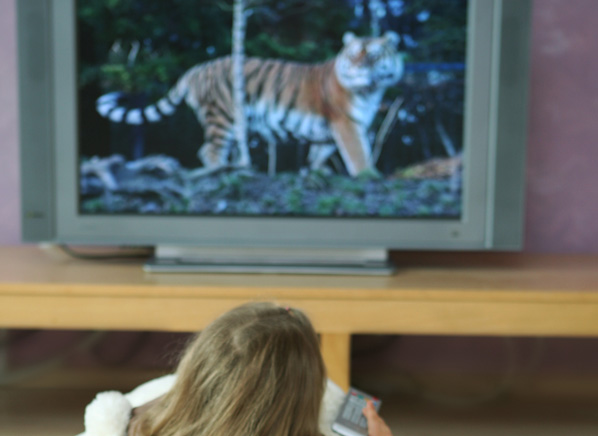Lots of folks bought a new TV in time to enjoy the Super Bowl and often the old TV winds up in a bedroom. It's crucial to ensure that any TV in your home is installed in a way that doesn't pose a hazard to kids. Televisions were involved in furniture tip-over accidents that killed 206 children ages 8 and younger in the United States during the years 2000 to 2011, according to the Consumer Product Safety Commission. And in the years 2009-2011 alone, 12,700 children under age 10 were brought to hospital emergency departments due to injuries involving TV tip-overs, the CPSC reported. The problem involves both older tube TVs and newer flat-screen models. Fortunately, with either type of TV, such tragedies are easily prevented.

Child victims usually sustain severe head or other injuries, when they are crushed by the TV or trapped under its weight. (See a video about The dangers of TV tip-overs to children.)
The hazard often occurs when a TV is placed on a dresser or other unstable furniture--perhaps a heavy old tube TV relegated to a child's room when a new flat-screen set takes over in the living room. A child may attempt to climb the furniture where a TV is placed--reaching for a remote control or a toy or even to turn on the TV--causing the whole top-heavy arrangement to fall on the child. Between 2000 and 2011, the age group that perished from TV tip-overs most often was children 1 to 3 years old.
"Small children are at greatest risk from TV tip-over accidents, and they are the least able to assess hazards and avoid them," says Eric Mallow, M.D., associate director of product safety for Consumer Reports.
What can you do? Some simple steps can keep your kids safe.
Secure your TV--new or old. Put your TV on a low TV stand--you can find one for as little as $30. Make sure the stand is no taller than 30 inches and designed specifically to hold a TV of that weight, particularly a heavy old tube TV. Look for an Underwriters Laboratories (UL) sticker so you'll know the stand meets current safety standards. And push the TV as far back on it as possible while keeping it stable.
Flat-screen TVs are safest when properly mounted on a wall. (Find a TV wall mount retail locator.) Once a TV is mounted to the wall, you can also put safety gates around it to keep your toddler at a distance.
If wall mounting is not feasible, use a TV anti-tipping strap (around $8). Also use an anti-tipping strap for the stand (about $16). Solidly attach anti-tipping straps for furniture to a stud in the wall, not just into drywall or plaster and lath. And secure any tall or wobbly furniture. Read more about Childproofing your furniture, and watch this video on furniture safety and stability.
Kick it to the curb. If you decide it's not worth the risk, recycle or donate a heavy old TV and buy a lighter one. (Small, 19-inch flat-screen TVs start at about $160.) No matter the size, secure it to a wall or anchor it to a dedicated TV stand with a strap designed for that purpose. If you need a new LCD or plasma set, check our buying guide and Ratings for TVs.





